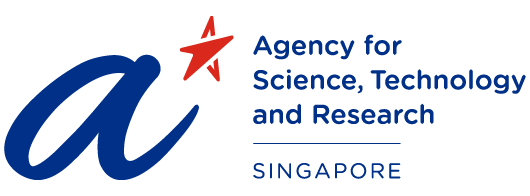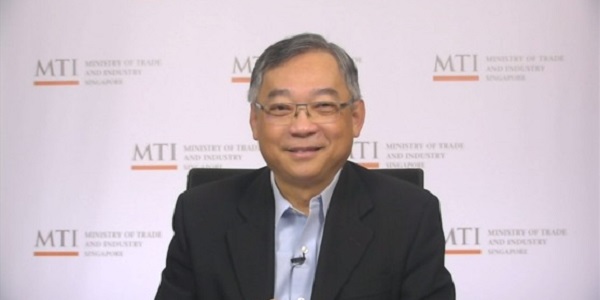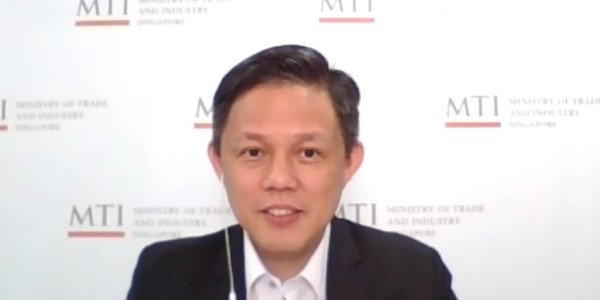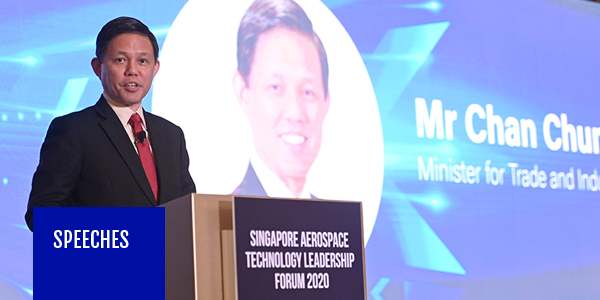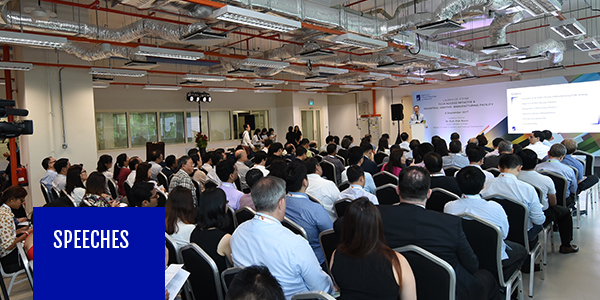Addressing National Challenges with Multi-Disciplinary R&D Capabilities
Speech by Minister of State, Ministry of Trade and Industry, Ms Low Yen Ling at the Singapore Aerospace Technology Leadership Forum (SATLF) 2024
22 Feb 2024
Distinguished Guests,
Ladies and Gentlemen,
Introduction
- Good afternoon. I am pleased to join you at the eighth Singapore Aerospace Technology Leadership Forum (SATLF) 2024. A very warm welcome to all our guests from around the world.
- We met virtually at the last SATLF forum in 2022 due to the COVID-19 pandemic. That was also when the aviation and aerospace industry grappled with unprecedented challenges. Fast-forward to 2024, and we are seeing a rebound in air travel volume, signalling a promising shift. While uncertainties persist on the macroeconomic front, the aviation and aerospace ecosystem is resilient in navigating the current challenges.
- As international travel picks up, the aerospace industry's future looks promising. We expect the sector to enhance its operational resilience, strengthen supply chains, and reduce its carbon footprint. Let me elaborate on how technology can drive Smart Aerospace and Sustainable Aviation, two key ways to grow the sector
- Artificial Intelligence (AI), digitalisation and automation represent significant advancements in smart aerospace that will continue to help the sector become more efficient and innovative. Besides investing in R&D, collaborations between players
in the aerospace ecosystem will allow the industry to leverage broader capabilities and accelerate technological developments.
- For example, the Agency for Science, Technology and Research (A*STAR) is working with the Civil Aviation Authority of Singapore (CAAS) to introduce more smart tools. Their research initiative will leverage rich data to improve decision-making in air traffic management and address issues such as delays caused by late arrivals. Armed with high- fidelity tools, air traffic planners will get more accurate, practical capacity estimates and be able to better optimise trajectories in the Terminal Manoeuvre Area (TMA). This enables more informed pre-tactical decision-making and helps to maximise capacity and operational efficiency in Changi’s TMA
- Similarly, Singapore Aero Engine Services Private Limited (SAESL) [pronounced Say-Zer] and A*STAR have worked together to develop a smart defect inspection system to streamline an otherwise manual and time-consuming process. This innovative system has boosted the productivity of SAESL’s defect inspection process in aircraft engine components by 50 per cent.
- At the same time, Singapore Airlines (SIA) and the National University of Singapore (NUS) are collaborating on a digital corporate laboratory, focusing on accelerating digital transformation and enhancing the air travel experience. The corporate laboratory features state-of-the-art facilities such as a cockpit simulator with Augmented Reality (AR) and Virtual Reality (VR) technologies and a cabin simulator with novel sensors to analyse passenger comfort. They also worked on additional projects. For example, the partners developed an AR-simulated passenger for cabin crew intuition training and a personalised environmental control system to improve protection against airborne infection while reducing skin dehydration.
- These improvements show the potential of Smart Aerospace to revolutionise the industry’s approach to operations and challenges.
- Looking ahead, another vital pathway to unlock the potential of sustainable aviation is decarbonisation. This has to be a top priority if international aviation is to achieve the goal of net-zero carbon emissions by 2050. The World Economic Forum reported that aviation accounts for around 2.5% of global carbon dioxide (CO2) emissions, with most aircraft still powered primarily by jet gasoline. It’s urgent to accelerate efforts to innovate processes and products and decarbonise effectively across the entire value chain.
- Singapore is actively taking steps to support aviation’s net- zero target. For instance, we continue to develop the renewable fuels ecosystem by facilitating the entry of production facilities and supporting capability development efforts. In
this regard, good progress has been made in adopting renewable fuels in the aviation industry.
- For example, in a one-year pilot in 2022, Singapore Airlines purchased 1,000 tonnes of neat Sustainable Aviation Fuel (SAF), which was blended with refined jet fuel and used on SIA and Scoot flights departing from Changi Airport. This pilot initiative, undertaken with CAAS and GenZero, an investment platform company focused on decarbonisation, provided corporate customers and freight forwarders with an avenue to reduce their carbon footprint while stimulating demand for SAF. Such initiatives will help shape future policies and initiatives to scale up SAF adoption in Singapore.
- At the same time, companies are leveraging our R&D ecosystem to develop innovative capabilities jointly.
- For instance, A*STAR and a local company dealing in high value material recovery and reprocessing, Nandina REM, have developed a way to reclaim materials from end-of-life aircraft. The materials are then transformed into sources of high-quality metal alloys and carbon fibre, which can be used to manufacture a range of products ranging from aircraft cabin galleys and seats to electric vehicle battery casings. This marks a significant stride in advancing aviation circularity. Nandina REM will work with the industry to integrate the “new materials” into their products. These efforts will contribute to cutting greenhouse gas emissions across global supply chains.
- The Singapore Government will continue to support the local aerospace and aviation industry to transform and capture rising opportunities.
- The refreshed Aerospace Industry Transformation Map (ITM) 2025 addresses the industry’s systemic shifts and provides key strategies and initiatives to boost its recovery. In addition, it sets out the path to cement Singapore’s position as a global node for aerospace manufacturing and maintenance, repair and overhaul (MRO).
- Our focus on public-private R&D collaborations to grow our local ecosystem is central to this effort. We will continue to create opportunities for local companies to co- innovate with multinational corporations and develop cutting-edge technological
solutions.
- For instance, A*STAR’s Singapore Institute of Manufacturing Technology (SIMTech) has completed a technology transfer to a local SME, Applied Total Control Treatment Pte Ltd (ATC). ATC will take over the repair line to refurbish Singapore Airlines’ cabin components. This enables SIA to utilise direct repairs instead of replacements, reaping considerable savings in time - from six months to just three weeks. ATC has gained a new capability, and we look forward to the company contributing to the local aerospace MRO ecosystem.
- In addition, established players like ST Engineering are partnering with IHLs such as NUS, NTU and SUTD to turn research into commercial applications. Focusing on advanced energy technologies and smart traffic management, ST Engineering aims to create enhanced solutions and new capabilities to rev up commercial and defence businesses across the aerospace, smart city, and public security domains.
- Seeing the public and private sectors working together to create innovative and sustainable solutions is heartening. This is just the beginning; I am confident the industry will see many more strong partnerships.
- Innovation, research and capability development are pivotal for Singapore’s aerospace industry to meet future industry demand and fulfil our climate commitment goals.
- The Government is committed to supporting and enabling our companies and workers to transform toward a smart and sustainable aerospace sector. I trust that at today’s forum, you will gain new insights and inspiration to capture fresh technology opportunities in aerospace.
- I wish you good health and prosperity in the Year of the Dragon. May you succeed in your work and business and soar to greater heights!
- Thank you.
Smart Aerospace to enhance productivity and performance
Sustainable Aviation to achieve Net Zero by 2050
Continuing to support the local aerospace/aviation industry
Conclusion
A*STAR celebrates International Women's Day

From groundbreaking discoveries to cutting-edge research, our researchers are empowering the next generation of female science, technology, engineering and mathematics (STEM) leaders.
Get inspired by our #WomeninSTEM
